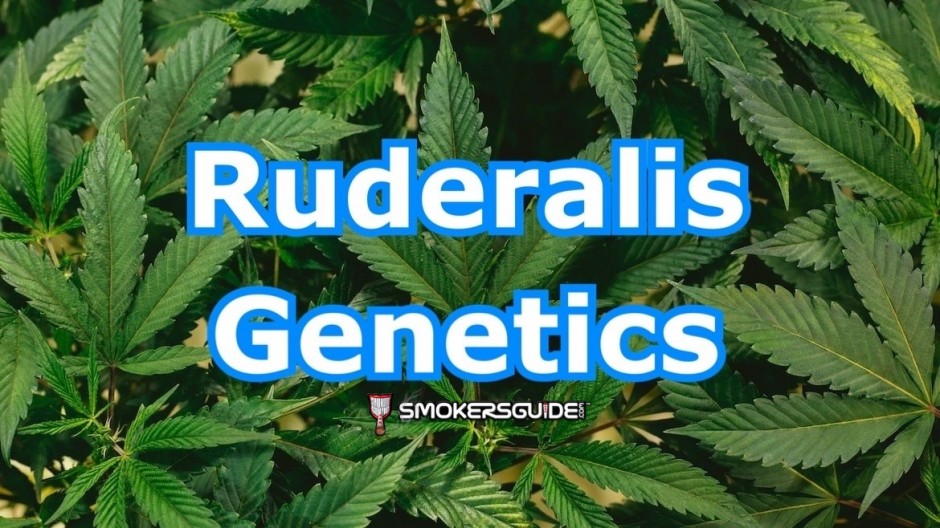Main image Photo by Jeff W on Unsplash
Background on Ruderalis
Cannabis Ruderalis stands distinct in the Cannabis genus, showcasing an evolutionary journey shaped by its unique environmental pressures. Originating in the colder terrains of Central and Eastern Europe and extending its natural habitat to parts of Central Asia, this species had to adapt to environments with limited warmth and fluctuating daylight durations.
Unlike its Sativa and Indica counterparts, which usually grow tall and bushy, Ruderalis plants typically maintain a smaller, more compact stature. This is believed to be an adaptive feature, reducing the plant's exposure to cold winds and frost. Furthermore, its leaves are usually narrower and its stems, tougher. These adaptations, over generations, imparted a resilience allowing Ruderalis to thrive in less-than-optimal conditions.
Perhaps the most striking adaptation is its departure from a photoperiod-dependent flowering pattern. With summers being unpredictably short and winters extending over prolonged durations, relying on light to flower would be detrimental. Thus, evolution equipped Ruderalis with an age-dependent flowering mechanism, ensuring reproduction even in challenging conditions. This unique ability to flower based on age, rather than light exposure, is termed "autoflowering."
Genetics of Autoflowering
So, what is autoflowering? Essentially, while Sativa and Indica plants flower based on changes in light exposure, autoflowering strains bloom after reaching a certain stage in their life cycle. This trait is attributed to the gene responsible for the autoflowering characteristic, prevalent in Ruderalis. When juxtaposed with traditional photoperiod strains, which depend on specific light-dark cycles to initiate flowering, the genetic distinction becomes even more fascinating.
The genetics underpinning this trait is a subject of intensive research. Scientists believe that certain genes, predominant in the Ruderalis genome, override the photoperiodic response, prompting the plant to flower after reaching a specific developmental stage. This distinction is not just botanically intriguing; it represents an evolutionary masterstroke enabling survival and reproduction in challenging environments.
Breeding and Hybridization
Recognizing the potential of Ruderalis' autoflowering trait, early cannabis cultivators saw an opportunity. The goal was straightforward yet ambitious: combine the robustness and autoflowering capability of Ruderalis with the yield, potency, and aromatic profile of Sativa and Indica varieties.
Initial hybridization attempts were rudimentary, often leading to plants that bore some desired characteristics but lacked in others. With advancements in genetic understanding and breeding techniques, the process became more refined. Modern breeders have access to genetic testing, enabling them to anticipate the traits potential hybrids might express.
Yet, this process is not without its challenges. Striking a balance between retaining the autoflowering trait and enhancing other desirable characteristics, like THC content or flavor profile, requires a deep understanding of cannabis genetics. It's a dance between dominance and recessiveness, ensuring that the genes responsible for autoflowering don't get overshadowed while trying to improve upon other characteristics. This meticulous task is what has led to the diverse array of potent, flavorful, and efficient autoflowering strains available today. Many stores nowadays, such as Herbies Seeds, offer a wide selection of these remarkable autoflower seeds.
Pros and Cons of Autoflowering Strains
The advent of autoflowering cannabis strains has brought about a shift in cultivation patterns, revealing a unique set of strengths and associated challenges. Here's a comprehensive look at the two sides of the coin:
Strengths:
Shorter Growth Cycles: One of the most prominent features of autoflowering strains is their abbreviated growth cycle. While traditional photoperiod strains may take upwards of four to five months from germination to harvest, many autoflowering varieties can accomplish this in a mere two to three months. This trait offers a timely turnover for growers, ensuring quicker returns on investment.
Versatility in Cultivation: Autoflowering strains owe their name to their ability to flower regardless of the light cycle. This unique characteristic allows them to thrive in geographical locations with fluctuating daylight hours, as they're not dependent on specific durations of light and darkness. This adaptability is a boon for indoor growers as well; they don't need to meticulously adjust and manage light schedules to induce flowering.
Continuous Harvest Opportunities: Due to their expedited growth cycle, cultivators can achieve multiple harvests within a single year. For those in regions with extended growing seasons, this translates to optimized production and potentially increased profitability.
Weaknesses:
Potency Concerns: Autoflowering strains, especially in their early iterations, faced scrutiny for their purportedly diminished THC content. While breeders have made significant strides in boosting the potency of modern autoflowering varieties, some critics argue that they may still fall slightly short when compared to the THC levels of top-tier photoperiod strains.
Limited Recovery Time: The blessing of rapid growth can also be a curse. Given their shorter life cycle, autoflowering plants have a compressed timeframe to recover from stresses or adversities, be it pest infestations, nutrient imbalances, or other cultivation mishaps. This demands vigilant monitoring from the grower to ensure that issues are identified and addressed promptly.
Yield Considerations: On average, autoflowering strains might produce smaller yields compared to their photoperiod counterparts, especially when grown under suboptimal conditions. While they compensate with faster growth cycles, it's a factor growers must consider when evaluating overall profitability.
Looking Ahead: The Promise of Autoflowering Genetics
The expansive landscape of cannabis genetic research continues to unfold, promising further breakthroughs in decoding and enhancing autoflowering strains. As the momentum of global cannabis legalization and commercialization accelerates, there's a rising tide of demand for varied strains, notably the autoflowering types. This evolving trend catapults Ruderalis genetics into a pivotal role, heralding a new era of cannabis cultivation. No longer confined to the shadows, Ruderalis, through the confluence of genetic science and expert breeding, has secured its spotlight. This evolution within the burgeoning cannabis sector epitomizes the boundless possibilities embedded within the genetic fabric of nature's wonders.
SmokersGuide.com disclaimer:
SmokersGuide.com takes pride in featuring high quality articles to its readers, however does not assume liability for the claims and medical facts presented by the author. Please check with your doctor or medical practitioner, before consuming any products containing CBD, THC, herbs and Smart Products, or any other products recommended here. Make sure to always check for advised dosages, and please keep all THC and CBD products (including vapes, flowers, oils, concentrates or edibles) away from children, animals and any persons who may not desire to consume them. Make sure to clearly mark all products with warnings about the contents, and store all products in locked, child-proof containers, to avoid accidental ingestion. Please check your own country's laws regarding CBD and THC, and make sure shipping is allowed. SmokersGuide.com content is always created in countries where cannabis products are legal, for medicinal and/or for recreational uses. Smokers Guide does not encourage the use of cannabis in countries where its consumption is illegal.







